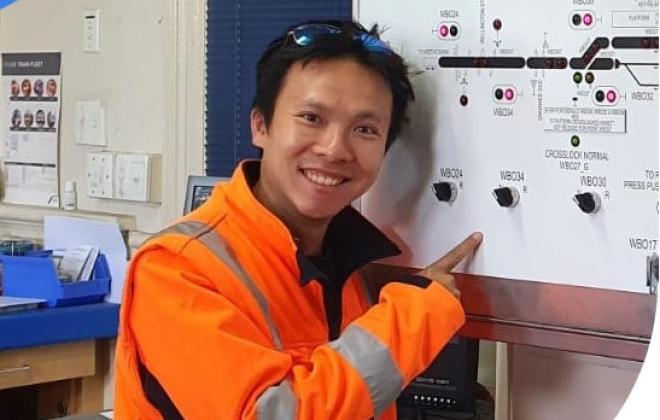Senior Design Engineer, DT Infrastructure
Background: Mechatronics Engineer
"Working in rail is not always as straightforward as easy as it seems. There’s a lot going on that you don’t see as a passenger.
I graduated from Monash University as a mechatronics engineer; mechatronics is a combination of mechanical engineering and an electrical discipline. Many mechatronics engineers end up working in robotics. As a fresh graduate without a permanent residency visa, I couldn’t be too choosy about job selection. So when I got offered the chance to go into the signalling industry, I immediately took it.
I had no idea what signalling was or what it would be like to work in the railway industry. I thought, how hard could it be?
I quickly realised that the signalling system is not only complicated, it is crucial to the safety of all train movements. The signalling system dictates when the trains can proceed, how fast they can proceed, how far the train can travel, and it prevents user errors or any system failure which would cause an unsafe situation.
The signalling industry allows you to branch off and take the technical path or the managerial path. Both are equally rewarding in terms of remuneration. My interest has veered towards the technical side.
There are many gurus in the industry who are more than willing to share their experience. At DTI, I’m very lucky to find myself in a company where I can turn to a couple of these gurus for advice.
There are many levels of industrial design. In the case of signalling, first there is the design itself. The design is then checked. Then it goes to an independent reviewer. Then to the stakeholders for approval. Once that’s done, the design gets built.
There four main stages in getting a concept design built:
- detailed design
- verification of the design
- independent verification of the design
- testing and commissioning the design.
My main task right now is the second of those stages: I verify the designs.
Each of these stages requires a different engineer, and those engineers can’t be involved in other stages. That way, each engineer is able to independently check that the design is free from error. The need for different engineers for all four stages is one reason the industry is facing a skills shortage.
The main satisfaction I get from my job is seeing my designs being built and used by the public. I was heavily involved in the regional rail project that required a train line to be built from Deer Park to Manor Junction, enabling V-Line trains to have a dedicated line from Geelong to Footscray. There’s a sense of pride in knowing that I played a big part in such a major project."
To find out more about how to become a Signalling Engineer check out our training pathways.

